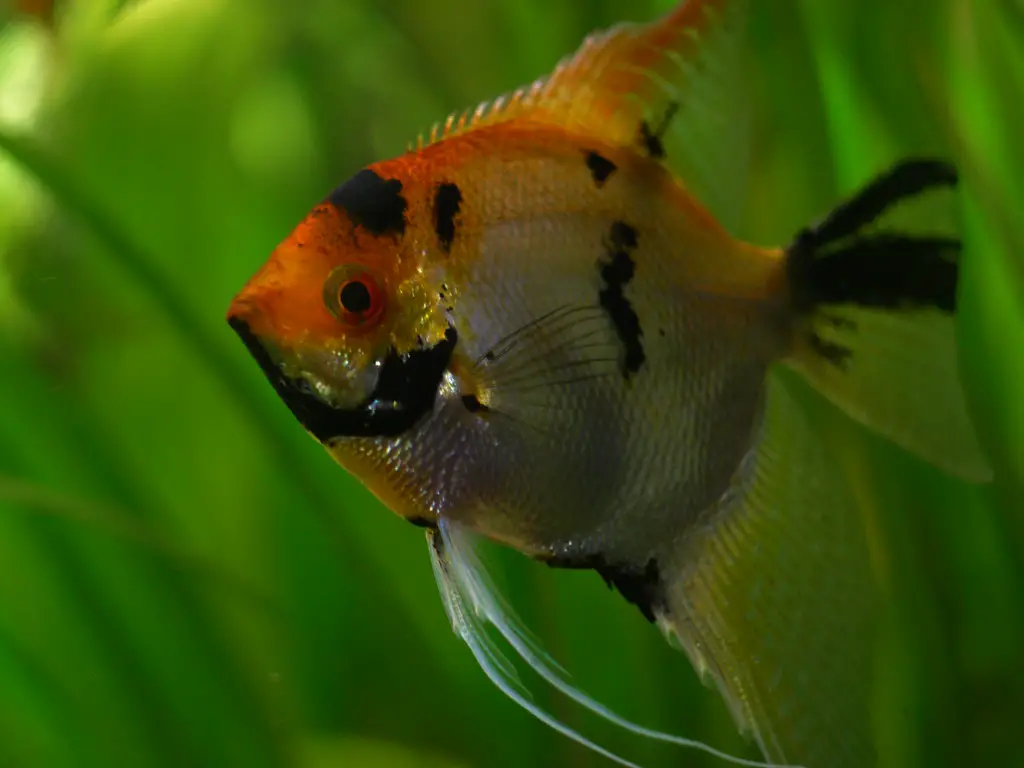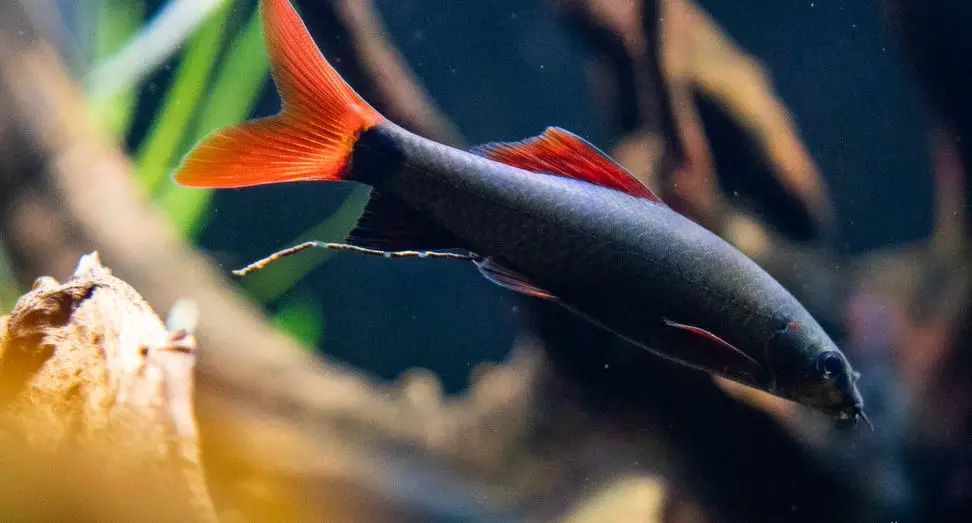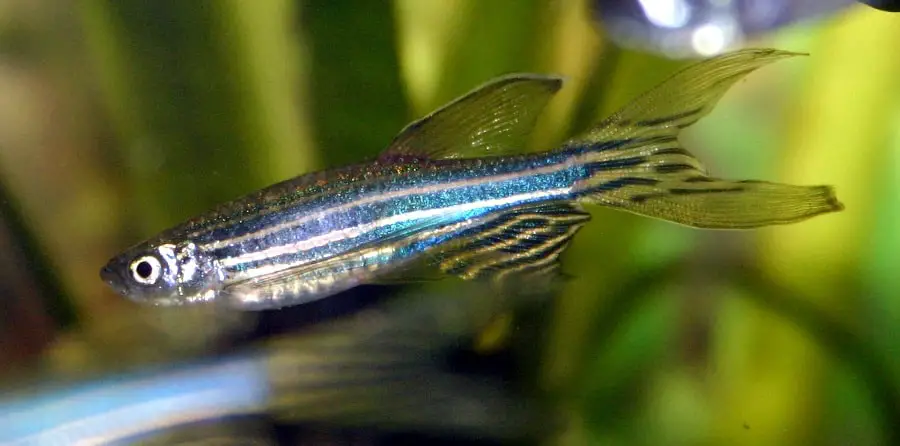Angelfish (Scientific name: Petrophyllum sclare), which belongs to the Cichlidae family, is one of the most commonly kept aquarium fish along sides goldfish. These fish are unique, but its odd appearance makes it wanted by many fish hobbyists all around the world. Angelfish originates from the Amazon basin of South America. Angelfish come in a lot of color and patterns. There are three recognized species to date. And all of them vary with their color and patterns. In the wild, they usually hunt down on small fish and other invertebrates. And they are mostly carnivorous. Its breeding behavior is also quite a sight to watch. Thus it is preferred by many expert fish keepers too.
Origin and Habitat in the Wild
Angelfish are found in the Amazon basins, Orinoco basins, and other shallow rivers from the Guiana shield present in the Southern parts of America.
Characteristics
Angelfish has an unusual appearance. It has a round body and a flat lateral section. It is a slow swimmer and thus looks majestic in the fish tank.
Fish description
Appearance
Angelfish have a very distinct appearance. They have a round-shaped body and have a compressed lateral section. This gives their body a diamond shape. Their dorsal and anal fins are elongated and are triangular in shape. This gives them a kite-like appearance. This trait gives them their commonly used name by many fish keepers, “The kite fish.”
Availability
Angelfish are available in almost each and every fish store. The huge demand by the fish keepers is met by the huge supply of these fish in the market. So the availability of this fish is not a problem at all. And it will be available in any of your local fish stores.
Price
The price of Angelfish varies due to different factors. Some common Angelfish are cheap, while some rare Angelfish like Altum Angels comes with a pretty hefty price tag. The more common Angelfish like platinum Angels have the price range of (5$-$8) per pair while Angelfish like Altum Angel and wild-caught Angelfish go for as much as 150$ per pair.
Lifespan
Angle fish are some of the longest living fish. If provided with proper care and water condition, they can live for more than ten years.
Sexual Difference
The size of the body in an Angelfish can help you differentiate the fish. Males have more oval and bigger bodies. Whereas female Angelfish has a round body and also are usually smaller than the male fish. However, this is not a surefire way to sex the Angelfish.
Angelfish can be sexed by observing their tubes. The tubes on the male Angelfish are usually narrow and long. The tubes in the female Angelfish are much wider and rounder. Also, male fish tend to develop a small nuchal hump-like structure in their head.
Fishkeeping Difficulty
Angelfish are pretty calm fish; they do not show any signs of aggression and tend to do well with all other tank mates. However, sometimes they can be picky eaters. And might not accept all the food you provide them. If you’re able to keep the water quality pristine and provide it with good food, keeping, angle fish shouldn’t be much of a problem.
Social Behavior
Angelfish are one of the most social fish and do well with any other tank mates that are not that aggressive. The temperament of this fish is low. They are calm, slow swimming fish. Angelfish should be avoided to be kept with any other fin nippers in the same tank.
Caring
Taking care of Angelfish is not that big of a deal. Providing it with the right water conditions, proper feeding, and maintaining the aquarium regularly should do the job.
Tank Size
Angelfish are slow swimmers, and they prefer a bigger surface area to swim in. A single adult Angelfish requires a minimum of 30 Gallon tank. And for a pair of adult Angelfish tank no less than 45 gallons. And the side of the tank should be gradually increased with the increase in the number and size of your fish.
Lighting in Aquarium
The tank housing Angelfish should be moderately lit to replicate their natural habitat. There should be plenty of dark spots for the fish to hide. However, if you are planning to keep them in a planted that, add the light that your plant requires. Plants in a planted tank will naturally create hiding spots for your fish.
Water Quality
Water quality is an important predisposing factor for the wellness of your fish. Angle fish, in particular, require an extremely pristine water quality. Good aquarium filter and regular water change once every week is a must. Checking the pH and making sure everything is normal should be done every once in a while.
Water Temperature
Water temperature for Angelfish should always remain constant. A slightest of variation in the temperature of the tank may lead the fish to stress out. Stressed Angelfish are more prone to diseases and decreased immunity. Angelfish come from relatively warmer water. So, it essential to keep the temperature of the tank between 76 °F – 80 ° F. This temperature should be maintained continuously thus, make use of an automatic heater.
Water pH and Hardness
Captive raised Angelfish accepts a wide range of water parameters. However, it’s best if you maintain the pH and water hardness that they feel safe and happy in. The natural habitat of Angelfish is slightly acidic. So in captivity, they prefer similar water parameters in their tank too. So, pH should be between 6.8 to 7.8 while water hardness between 3° to 8° dKH. To maintain your water condition, always replace 10% of your tank water once a week with fresh water. And make sure the temperature of the water that you add on, be at the same temperature as your tank water.
Water Filtration
Water filtration is key to the good health of any fish. Angelfish require the right water conditions and thrive in it. Angelfish do prefer current / waves, so a filter with a good flow is recommended. An internal filter or a powerful hang on back (hob) with a good flow is much suited for Angelfish.
Angelfish Diet
In the wild, Angelfish feed on small fish, invertebrates, and other worms. But in captivity, it accepts fish pellets with high protein, dried worms, mealworms, and freshwater shrimps. Frozen and live foods can also be fed as treats or to help induce spawning. For the best result, rotate their diet every week and feed only what they can finish withing 3 minutes twice a day.
Aquarium Decoration
Angelfish do not require any particular types of decoration; however, some shady spaces provide the fish with good hiding spaces. A planted tank is preferred over a tank without plants. Adding driftwood in the tank will also add to the natural appeal to the tank.
Angelfish Tank Mates
Due to Angelfish’s peaceful temperament, almost any fish can be kept with it. However, small fin nipping fish should be avoided. Angelfish can be kept with discuss Cichlids, Ram cichlid, cardinal tetras, loaches. And among these fish, Discuss cichlid would be the best suited to house along Angelfish.
Aquarium Care
Fish as majestic as angels don’t require as much care as you think. Running a good quality filter and doing regular water changes every other week should be it for maintaining the water quality. Checking the water parameters every now and then should be done.
Fish Disease
As of many cases, bad water conditions lead to many diseases in Angelfish. Some of the most common diseases are ich, fin rot, hexamite, Hith, etc. As Angelfish have long fins, in bad water conditions, they are prone to fin rot disease.
So, it’s always best to prevent diseases from attacking your fish. Always maintain your aquarium water quality, feed your fish a good diet. Look for the expiry date on your fish food. And always test your aquarium water with test kits to ensure the environment is healthy for your fish.
Breeding Angelfish
Before going into detail about breeding here are the things you will require when breeding Angelfish.
Breeding Tank
Your breeding tank should be anywhere around 30 Gallon.
Good filter
A good filter that provides adequate filtration in the tank is required. Good filtration is required not only for the fish to thrive in but for the eggs not to rot. The filter should have gentle flow but not enough to push the fish fry with its current.
Water Condition
The water conditions should be set properly for the Angelfish to breed successfully. Setting up the tank with the right temperature, pH, and hardness is the key to success. The temperature of the water should be around 82 ° F. And the ph should be around 6.5-6.9. If this does not work out, a huge water change of 75% might be helpful.
Diet
Both the male and female Angelfish should be properly conditioned before breeding to maximize the chances of breeding. The fish should be well-fed, so they don’t devour their own eggs.
Plants
Plants with large leaves should be put in the breeding tank. These plants provide a good surface for the fish to lay their eggs on. The plant should be properly cleaned before introducing it to the breeding tank, as it carries the risk of contaminating the water in the breeding tank.
Breeding Process
Angelfish are believed to be monogamous, so they form a pair on their own and only breed with them throughout their lifetime. The breeding procedure is quite simple after you’re able to sort a breeding pair from the rest of the bunch. It just takes the right environment and temperature to breed.
To lay their egg, first, they clean a flat and vertical surface on which they lay their eggs on. You can add a slab or a marvel for them to lay their eggs on. Next, spawning occurs with the female laying her egg first in a row and male following the female to fertilize the egg.
Most captive breeds of Angelfish eat their own eggs. So, it’s best to remove the parents from the tank after the spawning completes.
Breeding difficulty: Easy
Caring the Angelfish Fry
The eggs usually hatch after 60 hours from the spawning. After they hatch out from the egg, they are born with a yolk sac. And after they consume their yolk sac and become free swimmers, they should be fed with small pellets, live brine shrimps, or daphnia for quick growth.
Conclusion
Angelfish is one of the most majestic fish is easily accessible and is also budget-oriented. Its unique appearance, beautiful appearance, the combination of different patterns, and color makes it an absolute stunner. It doesn’t require any specific care, so it makes a perfect fish for the beginner fish keeper. And its behavior and personality make it perfect even for the most experienced aquarium hobbyist.






